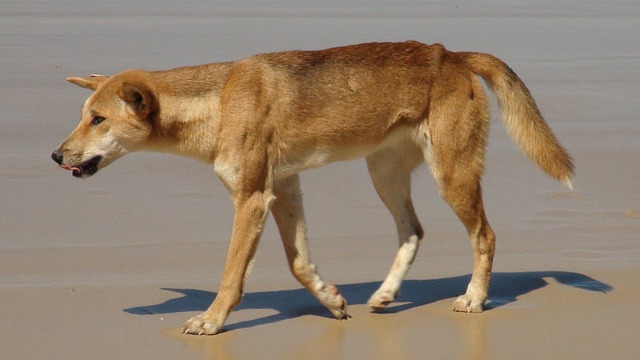New research done on dingoes – which are descended from the same common ancestor as wolves and domesticated dogs – shows that dogs gradually increased the amount of time they spent looking into our eyes over the last several thousand years because they could tell it made us feel good. In turn, that made them feel good as well.
A dog looking deeply into a human’s eyes increases the amount of oxytocin (a feel-good hormone that also helps mothers bond with their babies) in the human, which causes them to give the dog more attention. This increases the dog’s amount of oxytocin, leading to an endless loop of feeling good by staring into each other’s eyes.

Previous studies have shown that wolves – even those hand-raised from birth – almost never look into their owner’s eyes, and if they do, it’s usually for less than a second. New research on dingoes shows that they will look into their owner’s (or handler’s) eyes, but only for a few seconds at a time, and not nearly as long as a domesticated dog does.
Related: 10 Best Eye Supplements for Dogs

Ancient dogs started hanging out and breeding near humans around 20,000-40,000 years ago. These partially domesticated proto-dogs were brought to Australia around 9,000 years ago and became feral. Now, dingoes serve as a sort of missing link between wolves and domesticated dogs. Angie Johnston is a doctoral student of psychology at Yale University who led the study. She said:
“That means dingoes are giving us a snapshot of what proto-dogs were like before any human breeding…This suggests that even in the early stages of domestication, canids [the family that includes dogs, wolves and dingoes] may have already started making eye contact with humans, but it wasn’t until later that dogs started gazing into their owners’ eyes.”

Researchers believe that the longer stares of dogs (40 seconds on average) are required to kick-start the rise in oxytocin in humans, and that’s why they developed longer eye contact gazes than wolves or dingoes.
(H/T: Scientific American)
 Toledo, United States.
Toledo, United States.